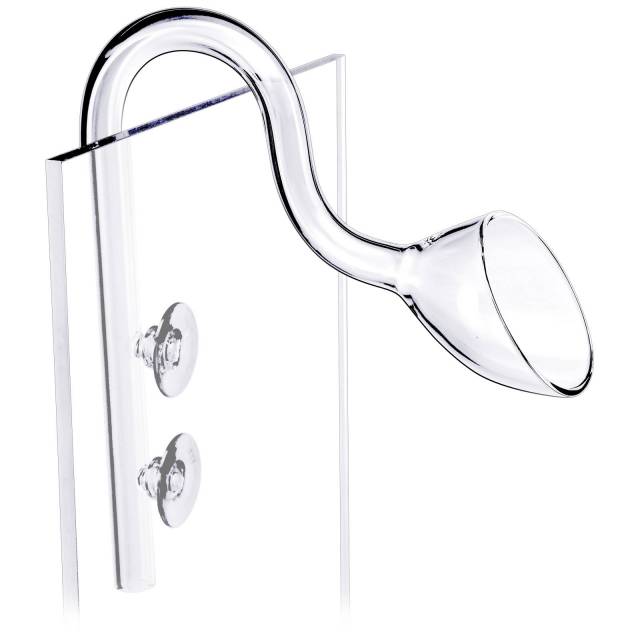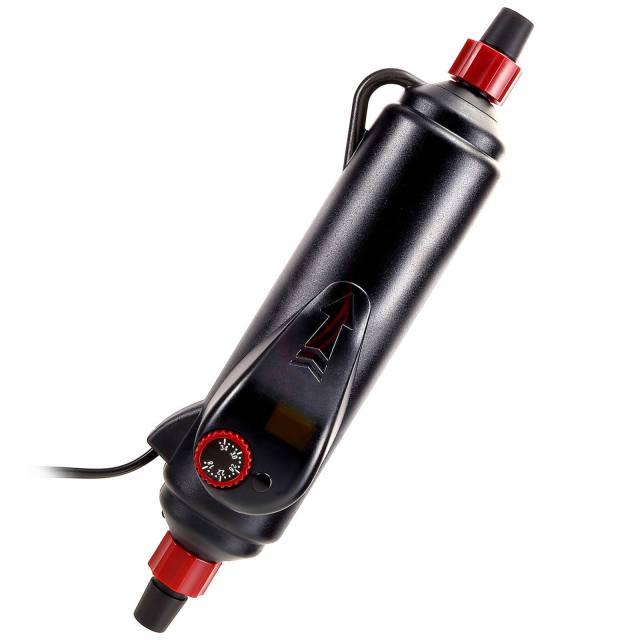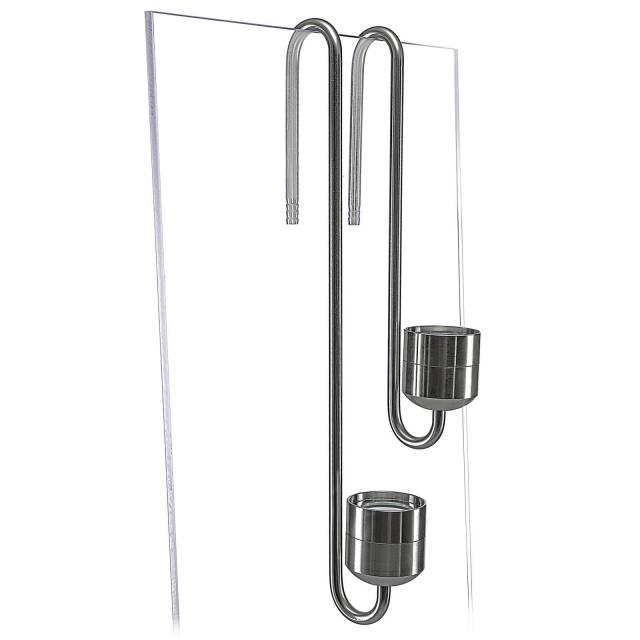An aquascape is a living piece of art. Besides the design and lifestyle aspect, however, it is also — simply spoken — a closed-off ecosystem in a glass tank. In order to make this ecosystem work for the plants and the animals and to give them a suitable environment where their well-being is assured, you'll need a certain degree of technical equipment. Unfortunately, the appearance of this equipment can significantly perturb the beauty and the harmony of an aquascape. Standard aquarium equipment has thus been taken a step further, and there are now solutions that are optically quite pleasing. This has been made possible by manufacturers like ADA, for example.
Of course, you can hide some of the equipment behind plants and decoration, however, this gives you certain infringements regarding the set-up and the design of the aquascape, its form and the space that is available.
In the following you'll see some examples how you can integrate your technical aquarium equipment in an optically pleasing way.
Filter technology
The way to go here surely is the replacement of unsightly plastic filter outlets and intakes by high-quality glass components (lily pipes) and transparent hoses. This transparent equipment makes the filter intake and outlet practically invisible.

Glassware and transparent hoses need to be cleaned frequently in order to maintain this effect in the long run, though. This is quite easily done with brushes especially designed for this purpose.

Lower maintenance, but no less stylish: There are filter equipment components made of stainless steel.
Heater
The most modern heaters are inconspicuous as they are compact and thus quite small. However, they still can be a disruptive element. So-called inline heaters (manufactured by Hydor, for example) are a great solution. Inline heaters are integrated into the hosing of the external filter, which makes this piece of technical equipment simply disappear in the cabinet, where it is hidden from sight.

CO2
CO2 supplying units on the aquarium can be fitted with high-quality glass components — in analogy with the filter equipment, as well as with transparent hoses. This includes diffusors, check valves, bubble counters as well as permanent tests.
The only highly visible components are here the white membrane of the diffuser and the test agent in the permanent CO2 test. However, even the permanent test can be hidden if you use a Hang On Dropchecker outside the tank. Clean the diffusors and the ceramic membranes on a regular basis to maintain a fresh look and an even CO2 supply. For this purpose, we offer special cleaning solutions, but you could also use a solution of a household chlorine bleach (instructions for use can be found here) . Of course, there are also components made of stainless steel for your CO2 supply.

The so-called inline diffusors require a lot less maintenance. Just like the inline heaters we described further above, inline diffusors are connected to the filter hosing, preferably inside the cabinet — another potentially disruptive element that can be hidden there. If you use an inline diffusor, the only thing you can see of your CO2 supply will be the fine bubbles that come out of the filter outlet.
Further equipment
As we all know, the devil is in the details. We offer optically pleasing solutions for even the smallest components, from stylish yet unobtrusive aquarium thermometers that are simply hung onto the aquarium edge over classy holders for aquascaping tools made of acrylic glass to optically very pleasing glassware for feeding the fish.